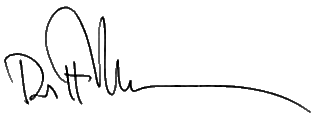| Dear Readers,
This is an issue that contains a total of 7 papers, each of them interesting
in its own way.
The first four papers included in this issue are selected papers from
the conferences I-KNOW and I-MEDIA in 2007 which are both part of the conference
series TRIPLE-I committed to New Media Technologies and Knowledge Management.
(For the conference in 2008 see http://triple-i.tugraz.at/).
All of the selected papers deal with collaboration or interaction from
different perspectives. Gisela Granitzer, one of the guest editors responsible
for the publication of the papers, writes:
The first
paper deals with optimizing office space in order to enhance
knowledge work productivity. The idea is that knowledge work
productivity can be improved if the assignment of office space is done
according to requirements of flexible and mobile ways of working and
if employees are bundled alongside common projects and themes. The
authors introduce a concept, discuss the implementation of the
corresponding solution and report evaluation results.
The second
paper also follows the idea of improving knowledge work
productivity. However, its focus is on social software. The authors
discuss the analysis of knowledge exchange processes as occurring in
wikis. In the paper it is shown how the interrelationships between
people, information, and events in a wiki information space can be
investigated by network analysis and how the resulting structure can
be used for the optimal deployment of people and information.
The third paper deals with another prominent social software
application, namely weblogs. Its main focus is on answering the
question which factors make a weblog successful in the sense of
attracting visitors and receiving contributions. By analysing the
weblog space of a well known Austrian newspaper, it could be shown
that success is highly related to the activity of the user.
The fourth paper refers to
web 2.0, especially to interactive advertising, but takes the point of
advertisers and publishers, not of users. It discusses the selection
of appropriate payment models depending on the aim of the campaign/the
ad, the goal of the user, and the type of the product."
These four
papers were selected and the review process coordinated by Gisela
Granitzer and Klaus Tochtermann from the KNOW-Center Graz whom I want
to thank cordially!
The other three papers went through the usual refereeing
process. The paper "A Linear Time
Approximation Algorithm for Ruler Folding Problem" deals with
"chains". A chain is a sequence of n links whose lengths are fixed and
are joined together from their endpoints, free to turn about their
endpoints, which act as joints. The "Ruler Folding Problem", which is
NP-Complete is to find the minimum length of the folded chain.
Page 505
The best linear approximation algorithm for this was proposed by
Hopcroft et al. The authors improve on the linear approximation algorithm
by demonstrating a linear time approximation algorithm using only O(1)
additional space.
The next paper "Publication Bias in the
Computer Science Education Research Literature" discusses
publication bias in the computer science education. Publication bias
is the tendency for investigations with primarily non-statistically
significant findings to be withheld from the research record. Because
publication bias has serious negative consequences for research and
practice, the authors gathered information about the prevalence and
predictors of publication bias in the computer science education
literature and report on this in the paper at issue.
Finally, in the last paper "Spatial Queries in Road
Networkds Based on PINE" of this issue the authors propose a
new algorithm for answering CKNN (continuous K Nearest Neighbour)
queries in special network databases, where the important measure for
the shortest path is network distances rather than Euclidean Distances
usually considered. The authors show in experiments that their
approach is better than the one using the so-called intersection
examination technique. I believe that this issue is again an
interesting mix and should be of interest to many readers!
There is one further point that I want to bring to
your attention at the request of a number of readers. How popular is
J.UCS, and has the popularity changed since it has become a free
access journal at the end of 2006? Well, the comparison of the two
years 2006 and 2007 is indeed very interesting. Have a look:
|
2006
|
2007
|
Increase in %
|
| Hits |
4,661,262
|
6,809,662
|
46%
|
| Pageviews |
1,563,291
|
2,732,605
|
75%
|
| Kbytes retrieved |
49,968,789
|
155,852,594
|
212%
|
| No. of PDF or PS files |
127,999
|
445,354
|
248%
|
So what does this mean? First, even when J.UCS was not free access it
was quite popular, however, the number of page views has further increased
dramatically within one year by 75%. That the number of PDF files downloaded
has more than tripled indicates that now, since it is free access, readers
are more often not just reading the abstracts, but are downloading the
full papers, afterwards.
It is more difficult to calculate how often papers are downloaded on
average, simply because even now a substantial number of the downloaded
papers come from earlier issues, even from issues published as early as
1995 and 1995. To be specific, in 2007 papers from vol.1 (1995) were still
downloaded 22.192 times. In 2007 papers from vol. 11 (2005) were downloaded
61.383 times. Taking the number of papers in that year into account means
that papers of 2005 were (on the average) still downloaded 500 times in
2007.
Page 506
A rough calculation thus yields that over the years, papers are
downloaded an average of more than 3.000 times each.
Well, is this not a reason to start or keep publishing in J.UCS?
Yours sincerely,

Hermann Maurer, Managing Editor
Graz University of Technology, Graz, Austria
Email: hmaurer@iicm.edu
Page 507
|
